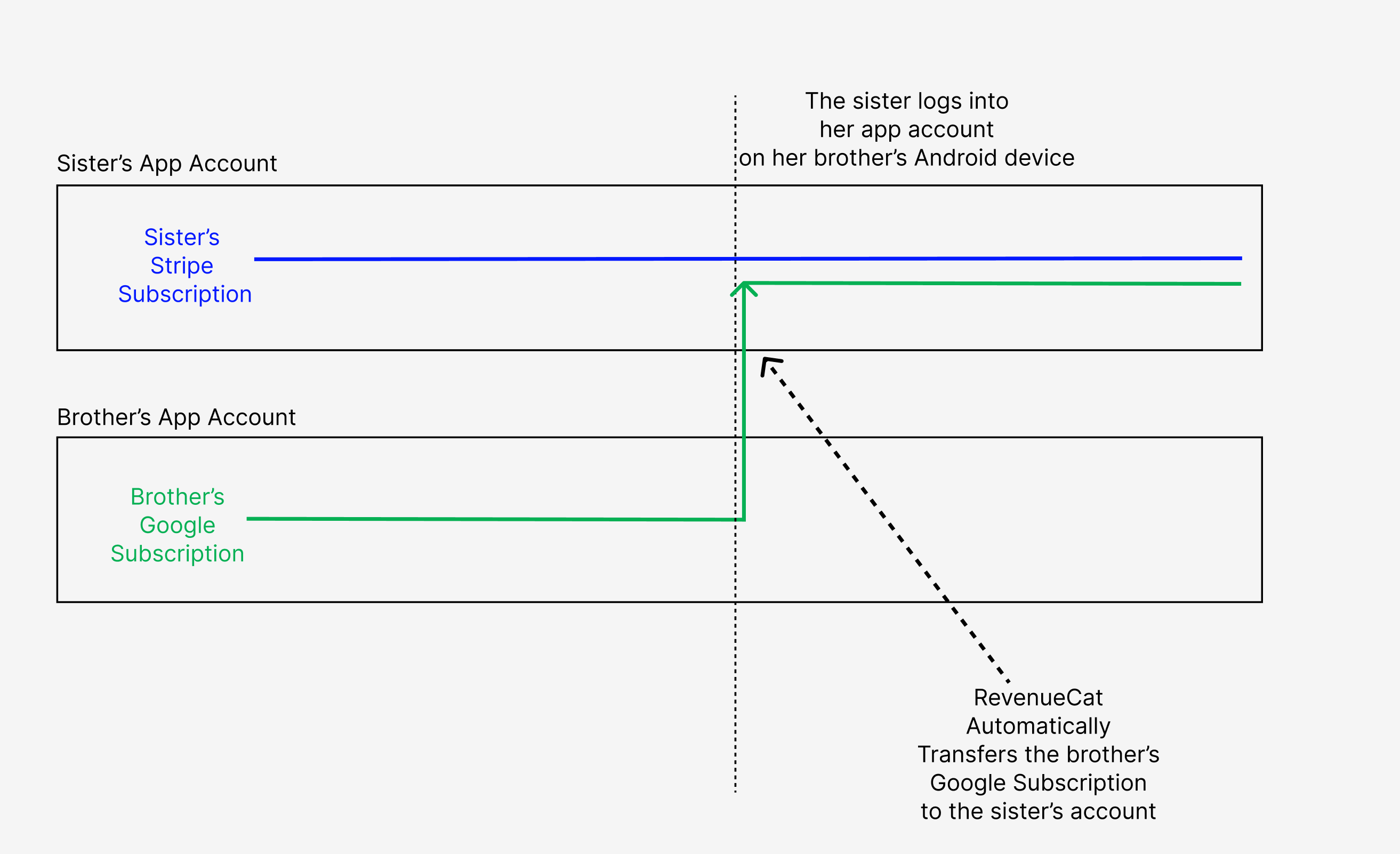I am working on preparing an Android app to properly support the `Transfer to new App User ID` behavior. Up until now, the project on RevenueCat was blocking transfers.

The app offers access to content based on a subscription, and the users require an account to purchase any subscription.
While reading the documentation, I noticed this section that mentions the following auto-transfer behavior:

So I made the following changes - as instructed by the docs here - , to make sure the existing subscription tied to the Google Play account doesn’t transfer to an anonymous user id:
- Only call `configure` or `login` on the SDK when the user is logged in the app (has a user id)
- Never call `logout` on the SDK
However, the problem that I noticed is that when I log in to another in-app account, the auto transfer behavior that is mentioned on the doc snippet shown at the beginning is not happening. Is that section of the documentation outdated or am I missing something?
Here is an example scenario that I ran in sandbox mode:
- Create an in-app account (account1@example.com) and subscribe
- Log out
- Create another in-app account and log in (account2@example.com)
Expected result (based on the docs): The existing subscription should be automatically transferred to account2@example.com
Actual result: No TRANSFER webhook is present when I monitor the latest webhooks sent in RevenueCat dashboard, thus the subscription is not transferred automatically. Also, I tried force stopping and restarting the app, but the subscription did not transfer in this case either.
However, if I call `Purchases.sharedInstance.restorePurchasesWith` when account2@example.com is logged in, the subscription is transferred properly to the new account.
I don’t mind this, I actually think it’s better this way, but I still don’t understand why that behavior mentioned in the docs is not happening in my tests. What I want to get is a clarification, because I don’t want to release the app like this and then be caught off guard when in Prod, that behavior starts happening to users.
Thank you!






